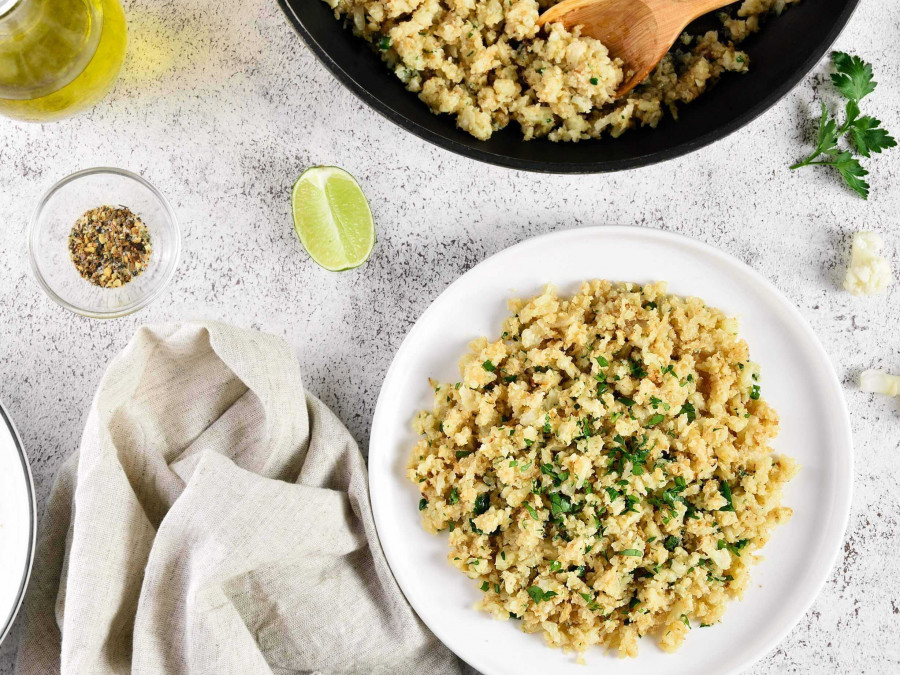Serves = 6
- 1 whole cauliflower (including steams and leaves) (approx. 800g)
- 1 tbs extra virgin olive oil
- 2 cloves garlic
- 6 spring onion stems
- 1 tsp cumin seeds
- 1/2 cup currants
- 1 bunch coriander, chopped
This tasty cauliflower rice uses the whole cauliflower and is a great way to up the veggie content of any meal

Nutrition information (per serve):